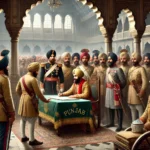PAK YATRA is a tour operator company providing tour services and facilitates Sikh community from different parts of the world.
Detailed History of Lal Masjid (Red Mosque)
Importance of Lal Masjid:
The Lal Masjid, or Red Mosque, holds significant historical and cultural importance in Islamabad, the capital city of Pakistan. Constructed in 1966, it served as one of the oldest and largest mosques in Islamabad before the construction of the Faisal Mosque in 1986. Over the years, it became a center of religious and educational activities, attracting thousands of male and female students to its adjacent seminaries.
Story Behind Lal Masjid:
The history of Lal Masjid is intertwined with the socio-political landscape of Pakistan. Initially established under the leadership of Maulana Muhammad Abdullah Ghazi, it became a focal point for religious education and activism. During the Soviet-Afghan War (1979-1989), the mosque played a significant role in recruiting and training mujahideen fighters to support Afghan mujahideen against the Soviet occupation.
Location and District:
Situated near Abpara Market in Islamabad, Lal Masjid is centrally located, with close proximity to commercial centers like Aabpara Market and Melody Market. It is located in the Islamabad Capital Territory at the following geographic coordinates: 33°42′46.3″N, 73°05′13.1″E.
Preservation Efforts:
Despite its historical significance, Lal Masjid has faced challenges and controversies over the years. The mosque was at the center of a siege in July 2007, which resulted in a military operation by the Pakistan Army against the leaders and students of the mosque. This event led to significant damage and loss of life, raising questions about the preservation of its historical and cultural heritage.
Architectural Marvel:
While Lal Masjid may not be known for its architectural grandeur, its simple yet elegant design reflects traditional Islamic architecture. The red-brick facade and minarets stand as a symbol of religious devotion and community gathering.
Historical Evolution:
Over the years, Lal Masjid has evolved from a place of worship to a center for religious and educational activities. It has witnessed changes in leadership and ideologies, reflecting the dynamic nature of religious institutions in Pakistan.
Background:
The background of Lal Masjid is marked by its involvement in religious and political movements. It has been associated with various leaders and movements critical of government policies, especially during times of conflict and unrest.
Historical Significance:
Despite its turbulent history, Lal Masjid remains a symbol of religious identity and activism in Pakistan. Its role in recruiting mujahideen fighters during the Soviet-Afghan War and its involvement in subsequent events have shaped its historical significance. However, its legacy is also marred by controversies and conflicts, highlighting the complex relationship between religion, politics, and society in Pakistan.
In conclusion, Lal Masjid stands as a testament to the intersection of religion, politics, and culture in Pakistan. Its historical significance, architectural design, and role in shaping religious discourse make it a noteworthy landmark in Islamabad’s landscape. However, its preservation and future remain uncertain amidst ongoing challenges and controversies.




